Wine Glasses! I love to buy new wine glasses! I know you don’t NEED buy fancy stemware to serve your wine, but it is FUN to buy the RIGHT stemware. Different types of wine glasses can enhance your enjoyment by directing its aromas appropriately and depositing the wine on certain areas of your tongue to help you perceive its flavor nuances. As long as you have basic wine glasses – either with stems or without – then you’re good to go. If you’d like to match your glasses to the wines you serve, you can purchase specific glasses.
Anatomy of a Wine Glass
A wine glass has four parts: the base, the stem, the bowl, and the rim. The base is what gives the glass its stability. From there, the stem elongates the glass while giving the customer something to hold on to without raising the temperature of the wine within. It also prevents fingerprints from getting on the bowl of the glass.
The bowl sits atop the stem. The bowl is arguably the most important feature of the glass. It needs to be large enough to comfortably swirl the wine without spilling or splashing it. Also, it must taper to retain and concentrate the aroma of the wine. Full-bodied red wines need room to breathe and to release their aroma. Therefore, a larger bowl is necessary when serving these wines. Conversely, white wine pour is in a smaller glass. The shape is much like a “U” and narrower than a red wine glass. This gives the wine enough room for the aromas to be released but also helps in maintaining the cooler temperature of the white wines. Finally, flutes are often used to serve sparkling wines, as they help the bubbles last longer.
The uppermost part of the bowl is where the rim lies. A thinner rim is less distracting to drinkers as they sip their wine, and a smooth rim will not impede the wine as it flows from glass to mouth. Thicker, rounder rims are the sign of a cheaply made glass, and while the glasses serve their purpose, they may be more distracting to the drinker.
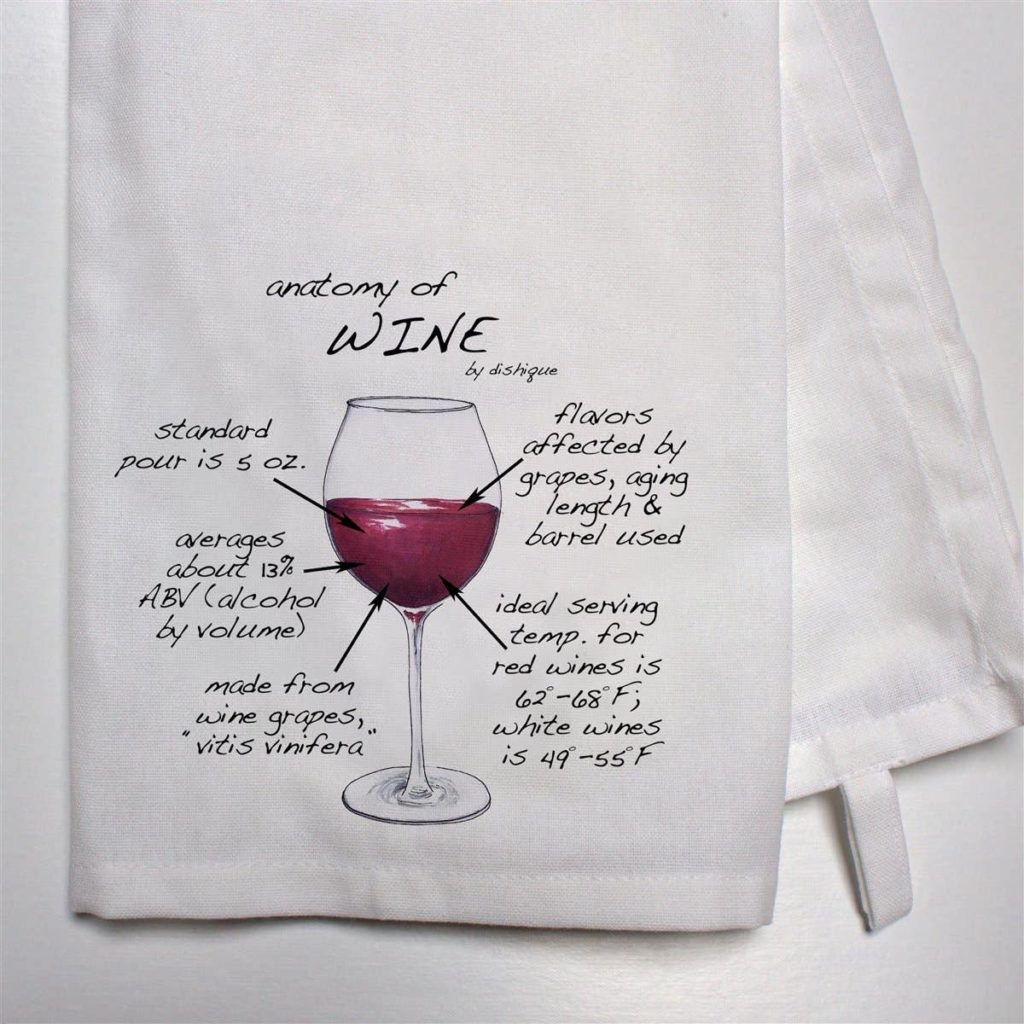
What Is a Standard Pour of Wine?
There is no legal measure for a standard pour of wine. However, in the restaurant industry, it falls somewhere around the 5 oz. mark. This allows a sommelier or host to get about 5 glasses out of any 750 mL bottle of wine. Some restaurants will pour as much as 6 oz. and some may offer less, depending on the price of the wine. Some glasses have pour lines printed on them, for a precise pour every time.
For tastings, a standard pour falls around 2 oz., enough to properly smell and taste the wine without initiating a buzz too quickly. Similarly, dessert wines are usually served in 2 oz. pours since they are much sweeter and higher in alcohol than other types of wines.
The size of the glass also plays into how much wine is poured at a time. A smaller glass will make it seem like there’s more wine, whereas a big balloon glass will make even a generous pour look light. Sparkling wine is often served in 5-6 oz. servings, like white or red wine, but it might look like a smaller pour because of the shape of the flute. It’s important not to overfill a wine glass, as the extra space in the glass is there intentionally, to hold aromas.
Red Wine Glasses
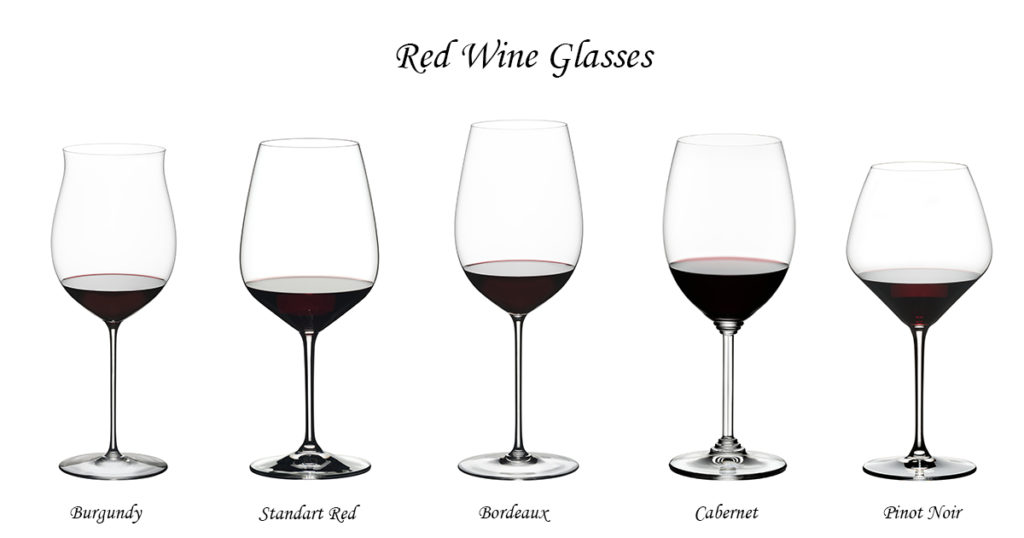
Red Wine glasses have the following characteristics:
- Large glass with a full, round bowl and large opening
- Opening enables you to dip your nose inside to detect the aroma
- Full bowl provides air contact for the complex aromas and flavors
- Increases the oxidation rate, which smooths out the complex flavors
White Wine Glasses
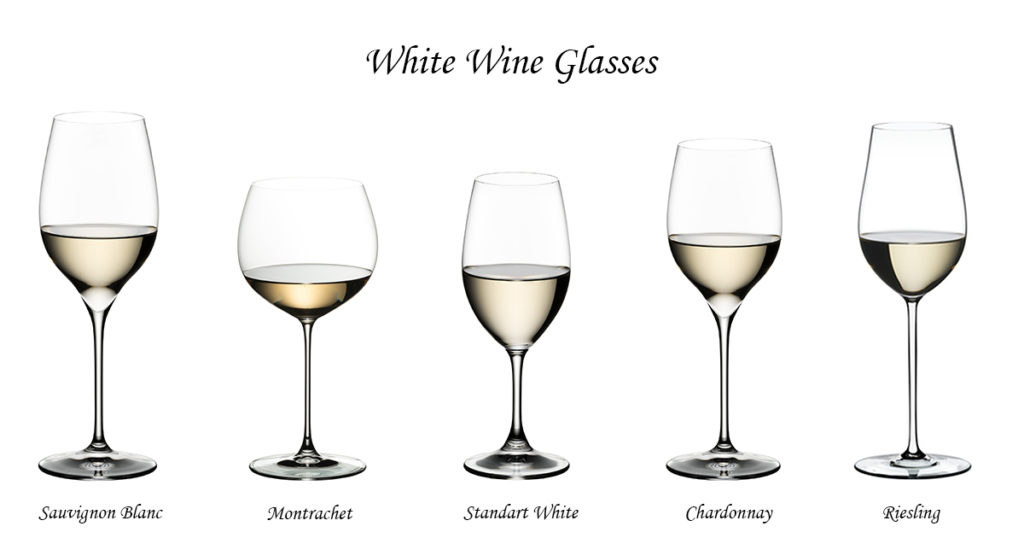
White wine glasses have the following characteristics:
- Bowl is more u-shaped and upright than a red wine glass
- Slightly smaller bowl than red wine glass
- The shape enhances and preserves aromas while also maintaining the wine’s cool temperature
Dessert Wine Glasses
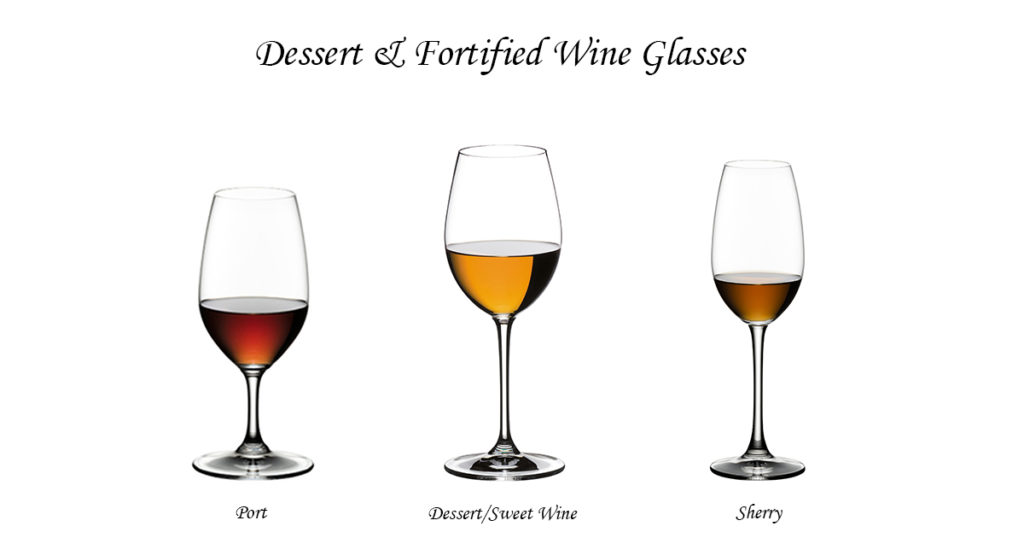
Dessert wine glasses have the following characteristics:
- Usually smaller due to the high alcohol content of dessert wines
- Dessert glasses usually also direct wine to the back to the tip and back of the mouth to allow for adequate sweetness detection
Sparkling Wine and Champagne Glasses
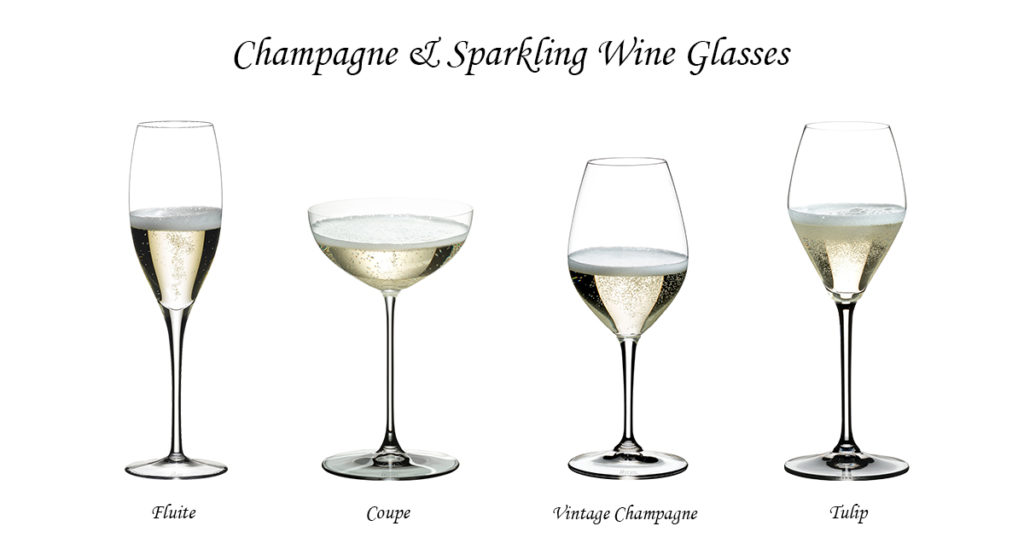
Sparkling wine glasses have the following characteristics:
- Upright, narrow bowl to preserve carbonation and flavor
Rosé Wine Glasses
The best rose wine glass depends on whether you are drinking a young or mature rosé. Below we go through the characteristics of a flared lip glass or a glass with a slight taper.
Flared Lip Rose Glass

- Type of wine: young, crisp rose or young white wine
- Long stem ensures that heat from the hand will not warm the wine
- Flared lip directs the wine first to tip of tongue where taste buds are most sensitive to sweetness. Enhances the sweetness of crisp wine; balances flavor and minimizes any bite
Slight Taper Rose Glass
- Type of wine: mature, full-bodied rose
- Short bowl that is rounded at the bottom with a slight taper instead of a flared lip
All-Purpose Wine Glasses
If a single glass type is all that your circumstances permit, an all-purpose wine glass is the way to go. Although the experience may not be the same as when you use the proper glass type for the application, these glasses offer a similar function at a lower cost and increased efficiency.
With Stem
- Bowl shape is in between that of red and white wine glasses, making it acceptable for use with both types of wine
Stemless
- Same shapes and styles of bowls as traditional stemmed wine glassware
- Wines may be warmed faster
- Boasts a contemporary appearance
Now that you are all educated on wine glasses, you are ready to learn all you can about Wine! Go here and learn more. If you’ve already checked out my page on fine wines and you are ready to Join, go here NOW!


